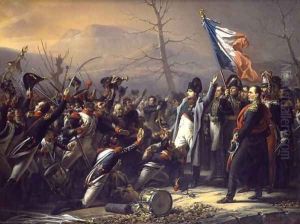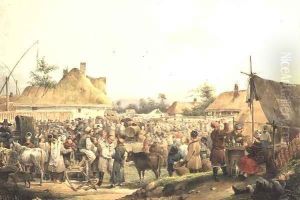Vasily Ivanovich (Wilhelm) Sternberg Paintings
Vasily Ivanovich Sternberg, born Wilhelm August Shternberg in 1818, was a Russian artist of German origin, known for his contributions to lithography and painting in the 19th century. Sternberg's name is less familiar in the annals of art history compared to his more illustrious contemporaries, but his work provides a valuable insight into the artistic movements and cultural life of his era.
Vasily Sternberg's artistic journey began in his youth, as he showed an early aptitude for drawing and painting. His talent was nurtured under the guidance of Karl Bryullov, a prominent Russian painter of the time, who was noted for his romantic style and who taught at the Imperial Academy of Arts in St. Petersburg. Under Bryullov's mentorship, Sternberg honed his skills and was exposed to the rich traditions of European art, as well as the burgeoning Romantic movement, which undoubtedly influenced his own style.
Sternberg's contributions to art were primarily through lithography, a printmaking technique that was gaining popularity at the time due to its ability to produce images reliably and in multiple copies. His lithographs often depicted scenes from Russian history and literature, reflecting a burgeoning sense of national identity that was common among Russian intellectuals and artists of the period. Sternberg's works are characterized by their attention to detail and their attempt to convey the emotional intensity of their subjects.
Tragically, Vasily Sternberg's life and career were cut short when he died in 1845, at the age of 27. The exact circumstances of his death are not widely documented, which has contributed to his relative obscurity. Despite his early death, his works remain a testament to the skill and potential of this 19th-century artist. Today, his lithographs and paintings can be found in the collections of Russian museums, offering a window into the artistic and cultural milieu of his time.

